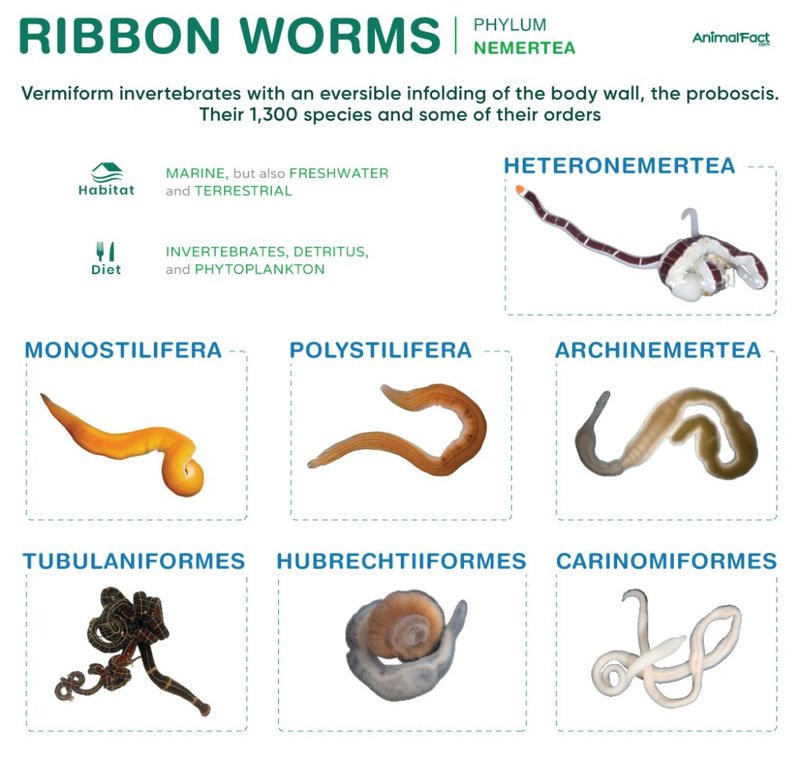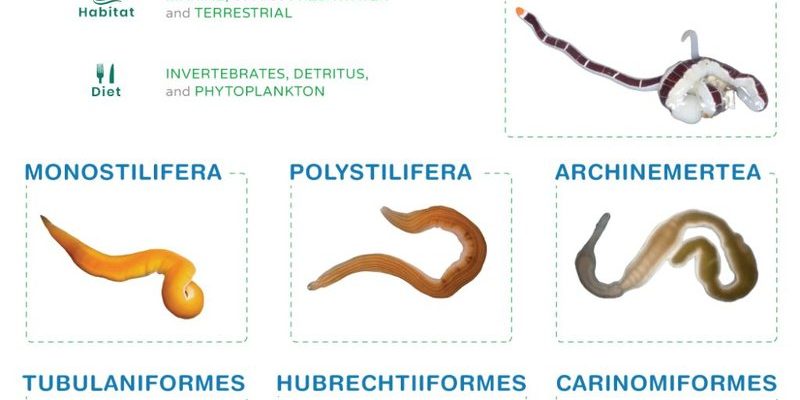
So, why should you care about these squirmy creatures? Well, they play important roles in their ecosystems and can give us insights into evolutionary biology. Learning about them not only scratches that curiosity itch but also helps you appreciate the diversity of life forms on our planet. Let’s dive deep into the interesting world of ribbon worms and flatworms, exploring their key differences, habitats, and more.
What Are Ribbon Worms?
Ribbon worms, scientifically known as **Nemertea**, are a group of soft-bodied, elongated marine animals. Some can even reach lengths of over 30 feet! Imagine encountering something that long coiling around a rock—now that’s a sight to see. They’re primarily found in oceans but can also inhabit freshwater and moist terrestrial environments.
One remarkable feature of ribbon worms is their **proboscis**—a long, tubular structure they can extend out to catch prey. This unique adaptation allows them to be effective hunters, grasping their meals quickly. Their bodies are usually segmented, which helps with movement and flexibility, letting them glide through the water or burrow into the sand.
Another cool fact? Ribbon worms can regenerate lost body parts. If a predator nibbles on one, it can grow back the lost section over time, much like how a starfish can regenerate its arm. This ability makes them quite resilient.
What Are Flatworms?
Flatworms, or **Platyhelminthes**, are a diverse group as well, ranging from well-known species like tapeworms to beautiful planarians found in ponds. Unlike their ribbon worm cousins, flatworms have a flattened body shape, which allows them to move swiftly through their environments. Their bodies can be as thin as a sheet of paper and typically measure only a few millimeters to several centimeters long.
These creatures are primarily found in aquatic environments but can also thrive in moist terrestrial habitats. Flatworms don’t have a circulatory or respiratory system. Instead, they absorb oxygen and nutrients directly through their skin. Think of it as having their skin act as a sponge, soaking up everything they need from the water around them.
Flatworms also have interesting reproductive systems. Some are hermaphroditic, meaning they have both male and female reproductive organs. This allows them to reproduce in various ways, broadening their chances of survival.
Key Physical Differences
The physical differences between ribbon worms and flatworms are striking. Here are some critical points to help you visualize them better:
- Body Shape: Ribbon worms have a **long, cylindrical body**, while flatworms are **broad and flat**.
- Size: Ribbon worms can grow quite long—up to 30 feet—whereas flatworms are generally much smaller.
- Body Structure: Ribbon worms are segmented, allowing them flexibility, while flatworms are unsegmented and typically more stable in shape.
Essentially, if you ran into one of each, you could spot a ribbon worm like an elongated noodle, while flatworms resemble little sheets or ribbons of flesh floating or crawling along surfaces. The differences in their physical characteristics have a significant impact on how they interact with their environments, hunt for food, and avoid predators.
Habitat Preferences
Both ribbon worms and flatworms can be found in various habitats, but their preferences do differ. Ribbon worms thrive in marine environments and are often found in sandy or muddy substrates on the ocean floor. They enjoy the hidden, dark spaces where they can swiftly dart out for prey.
On the other hand, flatworms have a bit more versatility. You can find them in freshwater lakes, ponds, and even damp soil. Some flatworms are nocturnal, making them harder to spot during the day, while others are more active during daylight hours. Their adaptability to various environments helps them survive even in challenging conditions.
Whether it’s the sandy bottom of the ocean or the leaf litter of a damp forest floor, both of these worm groups have carved out their niches in the ecosystem, demonstrating nature’s incredible diversity.
Feeding Habits
When it comes to food, ribbon worms and flatworms each use unique methods to catch their meals. Ribbon worms are fascinating predators. They use their **proboscis** to snatch up prey like small fish and crustaceans, injecting them with venom to immobilize them before swallowing them whole.
Flatworms, however, tend to be more opportunistic feeders. They mostly consume detritus, algae, and small invertebrates. When hunting, a flatworm will extend its pharynx to suck up its prey. It’s pretty incredible how these creatures can adapt their feeding habits based on their environment and available food sources.
The different ways they catch and consume food highlight just how diverse life can be, even among creatures that may initially seem similar.
Reproductive Differences
Reproduction is another area where ribbon worms and flatworms stand apart. Ribbon worms often reproduce sexually, with some species practicing a form of asexual reproduction as well. They can engage in fascinating mating rituals, where two individuals exchange sperm to fertilize eggs. Some might even be able to regenerate their entire body from a fragment, a trait that emphasizes their resilience.
Flatworms, on the other hand, have a variety of reproductive strategies. Many species are hermaphroditic, allowing them to mate with any partner they find, which increases their breeding chances. Some flatworms can also reproduce asexually through **fission**, where the body splits into two, forming two new individuals.
These different reproductive strategies ensure that both ribbon worms and flatworms can thrive in their environments, showcasing the incredible adaptability of life.
Ecological Roles
Both ribbon worms and flatworms play essential roles in their ecosystems. Ribbon worms contribute to marine food webs by controlling populations of smaller organisms. Their presence helps maintain the balance in ocean habitats, ensuring that no single species overpopulates.
Flatworms, meanwhile, act as scavengers, aiding in the breakdown of organic material in aquatic and terrestrial habitats. By feeding on decomposing matter, they help return nutrients to the ecosystem, enriching the environment for plants and other organisms.
In short, both types of worms are crucial players in the complex web of life, each contributing in their unique way to the health of their ecosystems.
In wrapping this up, it’s clear that while ribbon worms and flatworms might seem somewhat similar at first glance, they are worlds apart in terms of their physical traits, habitats, feeding strategies, and ecological roles. Understanding these differences not only satisfies our curiosity but also allows us to appreciate the immense diversity of life on Earth.
Next time you think of these squiggly creatures, remember the unique roles they play and the interesting adaptations they’ve developed to survive. Whether they’re slithering through ocean floors or slinking across pond surfaces, ribbon worms and flatworms remind us of the beauty and variety of life on our planet. So, let’s keep exploring and learning more about these fascinating creatures!

